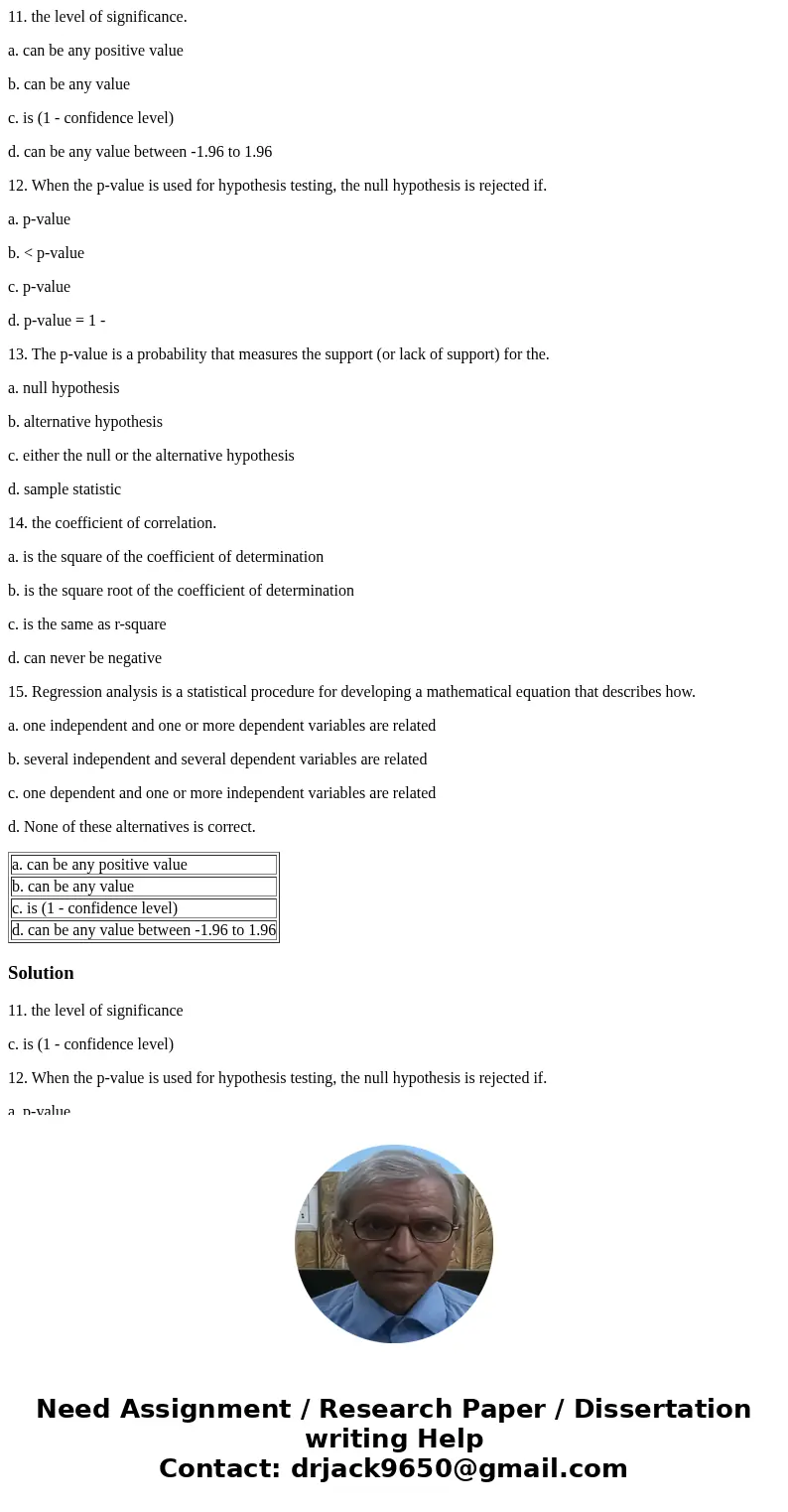11 the level of significance a can be any positive value b c
11. the level of significance.
a. can be any positive value
b. can be any value
c. is (1 - confidence level)
d. can be any value between -1.96 to 1.96
12. When the p-value is used for hypothesis testing, the null hypothesis is rejected if.
a. p-value
b. < p-value
c. p-value
d. p-value = 1 -
13. The p-value is a probability that measures the support (or lack of support) for the.
a. null hypothesis
b. alternative hypothesis
c. either the null or the alternative hypothesis
d. sample statistic
14. the coefficient of correlation.
a. is the square of the coefficient of determination
b. is the square root of the coefficient of determination
c. is the same as r-square
d. can never be negative
15. Regression analysis is a statistical procedure for developing a mathematical equation that describes how.
a. one independent and one or more dependent variables are related
b. several independent and several dependent variables are related
c. one dependent and one or more independent variables are related
d. None of these alternatives is correct.
| a. can be any positive value |
| b. can be any value |
| c. is (1 - confidence level) |
| d. can be any value between -1.96 to 1.96 |
Solution
11. the level of significance
c. is (1 - confidence level)
12. When the p-value is used for hypothesis testing, the null hypothesis is rejected if.
a. p-value
13. The p-value is a probability that measures the support (or lack of support) for the
a. null hypothesis
14. the coefficient of correlation.
b. is the square root of the coefficient of determination
15. Regression analysis is a statistical procedure for developing a mathematical equation that describes how
c. one dependent and one or more independent variables are related

 Homework Sourse
Homework Sourse